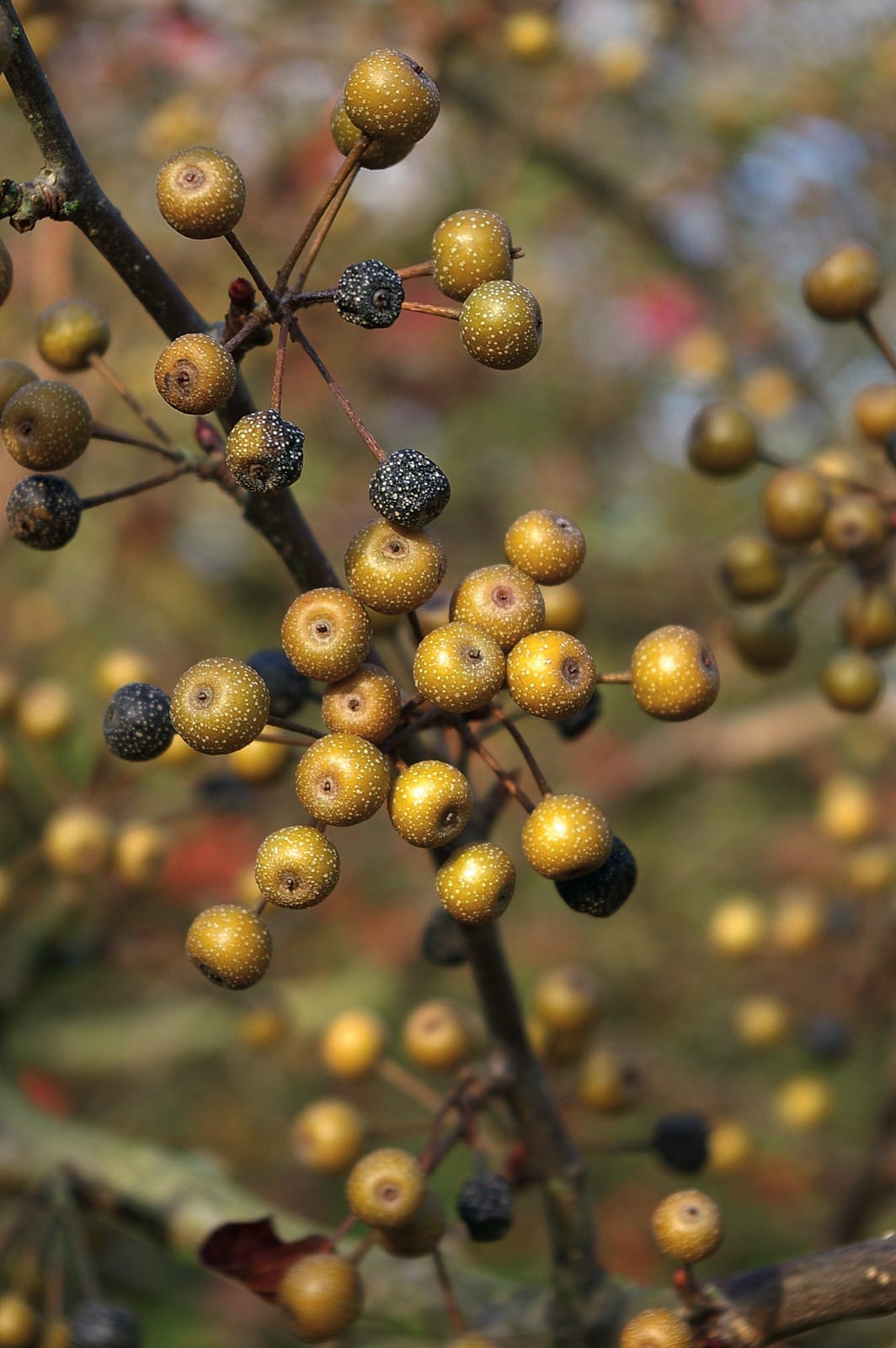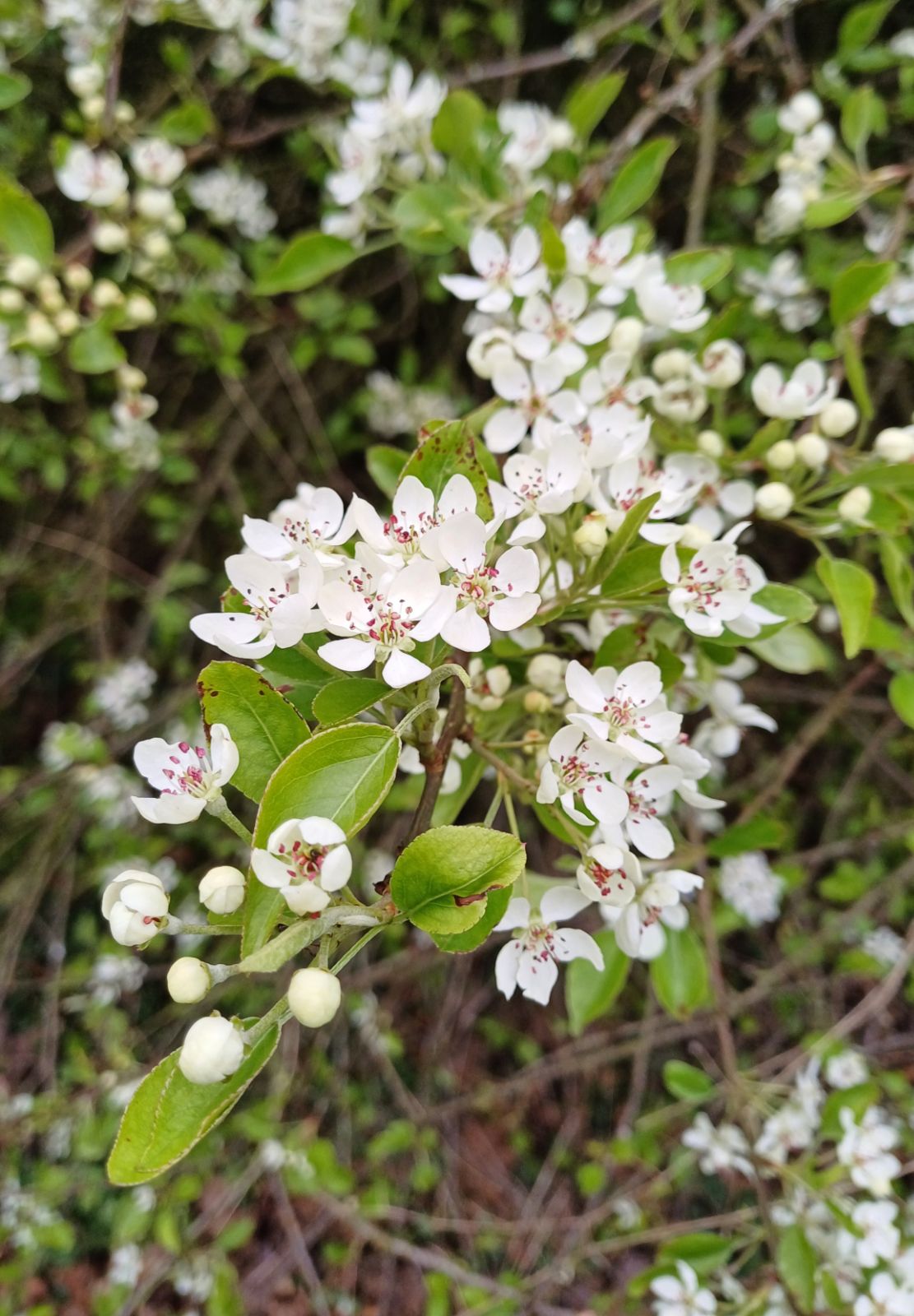Pyrus fauriei
Credits
Article from New Trees by John Grimshaw & Ross Bayton
Recommended citation
'Pyrus fauriei' from the website Trees and Shrubs Online (treesandshrubsonline.
Genus
Common Names
- Korean Pea Pear
Large shrub or small tree to 6 m. Immature branchlets unarmed, adult branchlets with thorns. Leaves deciduous, 2.5–5 cm long, elliptic to ovate, both surfaces glabrous, margins finely crenate, apex acuminate to caudate; petiole 0.9–1.8 cm long, pubescent. Flowering occurs when the tree is in leaf; corymbs with two to eight flowers on a densely tomentose peduncle; pedicels 1.6–2.7 cm long. Flowers white; sepals narrowly triangular, pubescent on the inside, petals four to six, often misshapen, stamens 20. Pome brownish with white dots, globose to obovoid, ~1.3 cm diameter with no stone cells. Zielinski 1965, Westwood 1968. Distribution NORTH KOREA; SOUTH KOREA. Habitat Unrecorded. USDA Hardiness Zone 4. Conservation status Not evaluated. Illustration NT688. Cross-reference K75. Taxonomic note This species is commonly confused with P. calleryana, but differs in a number of features. Pyrus calleryana forms a larger tree (to 12 m), which produces flowers before the leaves emerge. It has larger flower buds than P. fauriei, and more flowers per inflorescence cluster (10–13). Autumn leaf fall occurs from November to December (October to November in P. fauriei). In addition, when used as a rootstock for grafting, P. fauriei is found to be a dwarfing rootstock while P. calleryana is not (Zielinski 1965).
The difficult-to-quantify distinctions between Pyrus calleryana and P. fauriei have led to confusion in horticulture. Dirr (1998) notes that a vegetatively propagated clone of P. calleryana has been distributed in North America as P. fauriei, or ‘Fauriei’, and this will inevitably muddy the situation further. The two are clearly closely related, but true P. fauriei is a dumpy, shrub-like tree, forming a rounded mass at least as wide as it is tall. This is exemplified by a specimen at the Hillier Gardens, grown from KE 3681, collected in South Korea in 1985, and planted out in 1994, that is now 5 m tall but 8 m wide (A. Coombes, pers. comm. 2008). The species is not a great ornamental, but has abundant small fruits and attractive orange to red colours in autumn, and could be useful where a broad, bushy screen is required. It has been in cultivation since 1918, according to Krüssmann (1986). The earliest accession in the National Clonal Germplasm Repository dates to a wild collection made in Korea in 1939 (PI 132091), which was passed from the Arnold Arboretum via the Glenn Dale Research Station, Maryland to Corvallis, where it is currently but one of 35 accessions of the species (National Germplasm Repository 2008). Many of these are more recent wild collections. The cultivar ‘Westwood’, sold as Korean Sun, was selected by Mel Westwood of Oregon State University for its particularly good autumn colours. Released in about 1999, it has been widely planted, but as it is very susceptible to fireblight (at least along the East Coast) some major nurseries are no longer stocking it (L. Hatch, pers. comm. 2008).


